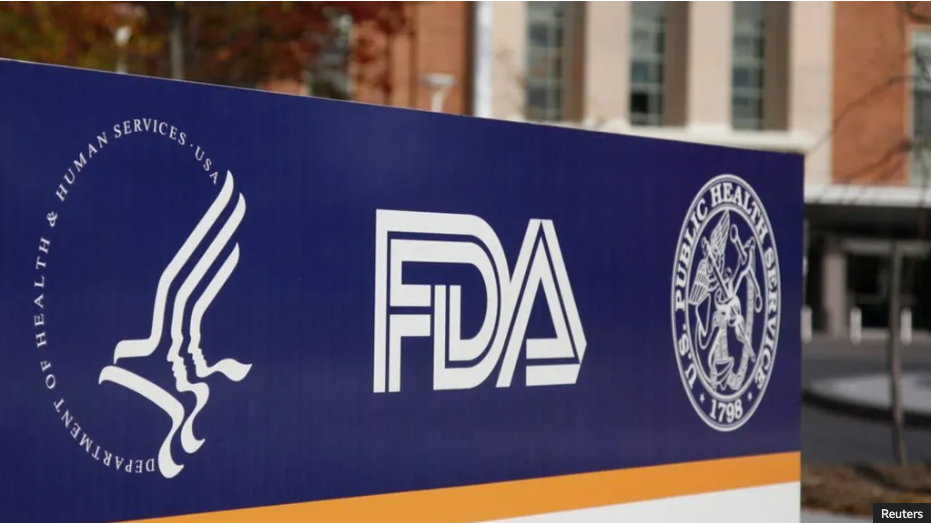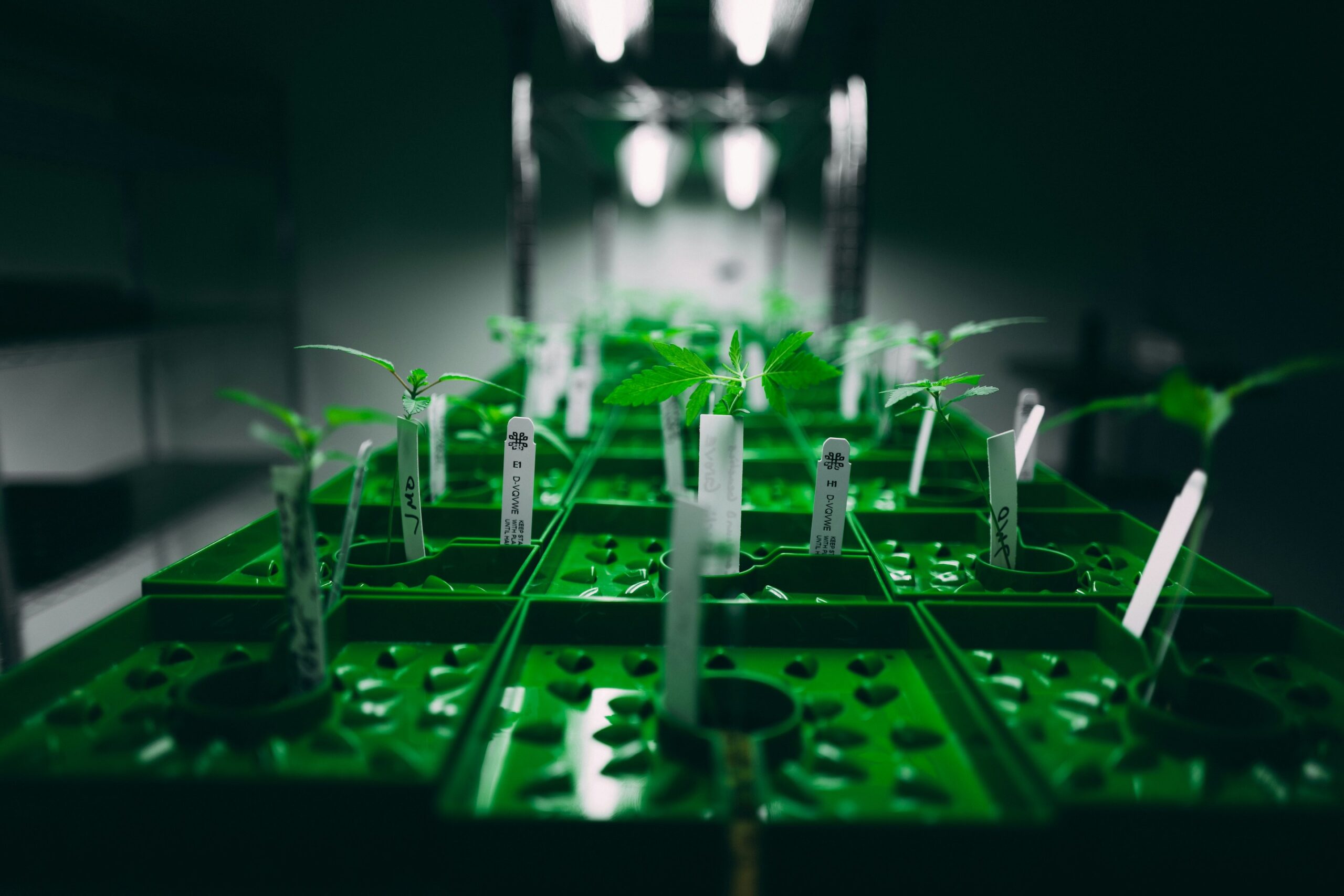Weekly Cannabis News
August 19th – August 26th, 2022
Low ∆9-Tetrahydrocannabinol (∆9-THC) Cannabis Oil for Fibromyalgia (FM) Treatment
Study results showed that this cannabis extract was effective in reversing FM symptoms in a mouse model.
Fibromyalgia (FM) is a chronic disease characterized by widespread musculoskeletal pain and is associated with fatigue, sleep disturbance, cognitive disorders, irritable bladder syndrome and depression. [1],[2] It affects around 4 million US adults (2% of the population), with women being twice as likely to have it compared to men. [3] While some therapeutic strategies are available (e.g., neuropathic, anticonvulsant, or antidepressant drugs), about 90% of patients are turning to alternative therapies to manage symptoms. [4],[5] As such, there is a strong need to consider other management strategies. One of which is the potential application of the cannabis plant, home to more than 100 phytocannabinoids, with ∆9-tetrahydrocannabinol (∆9-THC) and cannabidiol (CBD), being the most used and investigated compounds. Knowing that cannabis interacts with the central nervous system (CNS) and can interfere with endocannabinoid receptors and signaling molecules to produce analgesia, it represents an interesting candidate to alleviate FM symptoms.
Ferranini et al., aimed to investigate the effects of broad-spectrum cannabis oil with low ∆9-THC concentration after reserpine injection, mimicking symptoms of FM in a mouse model. [6] Using a wide array of experimental and behavioral assays, the group found that treatment with the cannabis oil was able to reduce mechanical hyperalgesia and reversed mechanical and heat thermal nociception. Additionally, treatment for 14 days led to mitigation of mechanical and thermal sensitivity and reduced depressive-like behavior in reserpine-treated mice.
The authors concluded: “Broad-spectrum cannabis oil is an effective alternative to reverse the reserpine-induced fibromyalgia model… Clearly, the findings of the present study may help in the therapy for patients with FM, however, some administration routes studied here are difficult to transpose to clinical practice. Another limiting point of this study is the fact that it does not address possible mechanisms by which broad- spectrum cannabis oil acts. In this sense it is necessary to develop more studies that answer such gaps.”
Gene Expression Changes in Late Adolescence Following ∆9-Tetrahydrocannabinol (∆9-THC) Administration in Early Adolescence
The study revealed key genetic drivers responsible for addiction processes, synaptic transmission, brain development and lipid metabolism.
The cannabis plant is known to be the most widely used psychoactive drug in the world. [7] With the increasing cannabis consumption among the US population due to more states legalizing it for medicinal and recreational purposes, it is becoming important to further characterize not only its applications in disease states but also its potential harmful effects. More specifically, cannabis use during adolescence may be harmful because of the neurobiological and behavioral changes that are occurring during this key period of plasticity and can lead to persistent cognitive impairments. [8] Along those lines, reports have shown that adolescent chronic cannabis users (CCU) have verbal learning and memory impairments which may be linked to lower cognitive and academic performance. [9],[10] Additionally, early cannabis use increases the risks of developing cannabis use disorder (CUD), defined as the inability to stop consuming cannabis despite showing physical and psychological harm. [11] Reports have shown CUD may have a strong genetic component along with environmental factors that can influence its severity and development. [12] However, there are limited studies available on the impact of ∆9-tetrahydrocannabinol (∆9-THC), the psychoactive agent in the cannabis plant, during adolescence on gene expression in different brain regions.
A group of researchers at the University of California Los Angeles aimed to further determine this missing gap by treating male and female mice with ∆9-THC during early adolescence, assessing behavior in late adolescence and analyzing gene patterns in key brain regions involved in cognitive and addiction behaviors. [13] Firstly, they found that ∆9-THC administration impaired memory and social interaction and induced a novelty exploration deficit, specifically in female mice. Secondly, they identified a group of genes that were differently expressed following exposure to THC, that were important in addiction processes, synaptic transmission, brain development, and lipid metabolism.
Some of the study limitations outlined by the authors included focusing solely on cognitive behaviors, lack of additional brain regions such as the hippocampus, and the impact of sex-specific hormonal changes on gene expression.
The authors concluded: “Our study is the first to integrate gene expression profiles, GWAS, and network modeling to reveal comprehensive sex- and brain region-specific view of biological processes and regulators influenced by cannabis use and linked to CUD vulnerability…Our findings open numerous new hypotheses that warrant future experimental validation.”
The Use of Cannabidiol (CBD) to Treat Arthritis: Results from an Exploratory Cross-Sectional Study
Survey respondents showed that CBD use was associated with improvement in pain, physical function, and sleep quality with reduction or cessation of other pain medications.
Arthritis is derived from the Greek term “disease of the joints” and is defined as an acute or chronic joint inflammation that often co-exists with chronic joint pain, joint degeneration articular neuropathy and structural damage. [14],[15] The Center for Disease Control and Prevention estimate that 1 in 4 US adults (23.7%) or about 58 million of people are doctor-diagnosed with arthritis, with women being more commonly affected. [16] Additionally, arthritis is highest among individuals who report no leisure time physical activity compared to those who are insufficiently active. [17] The use of nonsteroidal anti-inflammatory drugs (NSAIDs) is commonly used as the first line of treatment but are associated with long-term adverse events such as bleeding, ulcer disease, or acute kidney injury. [18] As such, there is a need to investigate alternative treatment strategies. One that is gaining popularity is the use of cannabis, specifically cannabidiol (CBD), known to have anti-inflammatory, antinociceptive, and antioxidant properties. [19] However, there is a need for additional studies on its use in treating arthritis-related symptoms.
Using questionnaires from 428 participants, Frane et al., aimed to explore patient perceived effects of CBD on improving quality of life in patients with arthritis. [20] They found that CBD was associated with improvement of pain, physical function, and sleep quality. Additionally, most of the respondents reported a reduction of anti-inflammatory medications, acetaminophen, or opioids after CBD use, suggesting this compound can be an alternative agent to treat arthritis-related symptoms.
The authors concluded: “Clinicians and patients should be aware of the various alternative therapeutic options available to treat their symptoms of arthritis, especially in light of the increased accessibility to cannabidiol products. The present study, while exploratory in nature, suggests there may be therapeutic benefits to CBD use and highlights the need for research in a field where the science lags behind popular use. Future research should focus on exploring the benefits of CBD use in this patient population with well-controlled clinical trials.”
Cannabidiol (CBD) & Anxiety-Related Disorders
While additional evidence is needed, results from the study suggest that CBD may be a good therapeutic agent as an adjunct treatment for anxiety-related disorders.
According to the American Psychological Association, anxiety is an emotion characterized by feelings of tension, worried thoughts, and physical changes like increased blood pressure. [21] It is the most common mental disorder in the US, affecting 40 million adults aged 18 or older, so about 18.1% of the population, with women are most likely to experience anxiety like symptoms compared to men. [22] While experiencing occasional anxiety is part of our lives as the body’s natural response to stress and may help with energy and boost or focus, repeated anxiety episodes can lead to intense, excessive, and persistent worry and fear that can interfere with daily activities. [23] These repeated emotions are called anxiety disorders. Various anxiety-related disorders are shown to present with abnormally persistent fear-related memories involving disturbances in their inhibition through extinction. This type of learning reduces learned fear expression and forms the basis for exposure-based therapies. [24]
Current medications are often associated with poor efficacy or adverse effects in patients and as such, alternative therapeutics are needed. Cannabidiol (CBD), the main non-psychoactive compound in the cannabis plant, is known to exhibit anxiolytic properties, reduces the expression of learned fear, and enhances fear extinction to facilitate the reduction of learned fear expression and as such, may represent a valid agent to treat anxiety-related disorders. [25],[26]
Papagianni et al., aimed to determine the effects of systemic CBD treatment on delayed extinction and later spontaneous fear recovery and extinction resistance caused by immediate extinction (the immediate extinction deficit (IED) in mice using different behavioral techniques. [27] The group found that CBD had no effect on extinction recall but prevented spontaneous fear recovery. Additionally, CBD rescued the IED without involving the effects on fear memory consolidation.
The authors concluded: “In this study we found that cannabidiol prevented the spontaneous recovery of fear after delayed extinction and ameliorated the extinction impairment that occurs with immediate extinction. Further research is needed to determine the pharmacological and neural mechanisms underlying cannabidiol regulation of the return of fear over time and stress-induced extinction resistance.”
References:
[1] Alciati A, Nucera V, Masala IF, Giallanza M, La Corte L, Giorgi V, et al. One year in review 2021: fibromyalgia. Clin Exp Rheumatol 2021;39 Suppl 130(3):3-12.
[2] Bair MJ, Krebs EE. Fibromyalgia. Ann Intern Med 2020;172(5):ITC33-ITC48.
[3]https://www.cdc.gov/arthritis/basics/fibromyalgia.htm#:~:text=Fibromyalgia%20affects%20about%204%20million,2%25%20of%20the%20adult%20population., assessed on August 26th, 2022
[4] Bazzichi L, Giacomelli C, Consensi A, Giorgi V, Batticciotto A, Di Franco M, et al. One year in review 2020: fibromyalgia. Clin Exp Rheumatol 2020;38 Suppl 123(1):3-8.
[5] Siracusa R, Paola RD, Cuzzocrea S, Impellizzeri D. Fibromyalgia: Pathogenesis, Mechanisms, Diagnosis and Treatment Options Update. Int J Mol Sci 2021;22(8).
[6] Ferrarini EG, Paes RS, Baldasso GM, de Assis PM, Gouvea MC, Cicco P, et al. Broad-spectrum cannabis oil ameliorates reserpine-induced fibromyalgia model in mice. Biomed Pharmacother 2022;154:113552.
[7] United Nations. World Drug Report 2020. (UN, 2021).
[8] Juraska JM, Willing J. Pubertal onset as a critical transition for neural development and cognition. Brain Res 2017;1654(Pt B):87-94.
[9] Broyd SJ, van Hell HH, Beale C, Yucel M, Solowij N. Acute and Chronic Effects of Cannabinoids on Human Cognition-A Systematic Review. Biol Psychiatry 2016;79(7):557-67.
[10] Meier MH, Caspi A, Danese A, Fisher HL, Houts R, Arseneault L, et al. Associations between adolescent cannabis use and neuropsychological decline: a longitudinal co-twin control study. Addiction 2018;113(2):257-65.
[11] Connor JP, Stjepanovic D, Le Foll B, Hoch E, Budney AJ, Hall WD. Cannabis use and cannabis use disorder. Nat Rev Dis Primers 2021;7(1):16.
[12] Pasman JA, Verweij KJH, Gerring Z, Stringer S, Sanchez-Roige S, Treur JL, et al. GWAS of lifetime cannabis use reveals new risk loci, genetic overlap with psychiatric traits, and a causal influence of schizophrenia. Nat Neurosci 2018;21(9):1161-70.
[13] Zuo Y, Iemolo A, Montilla-Perez P, Li HR, Yang X, Telese F. Chronic adolescent exposure to cannabis in mice leads to sex-biased changes in gene expression networks across brain regions. Neuropsychopharmacology 2022.
[14] Ma L, Cranney A, Holroyd-Leduc JM. Acute monoarthritis: what is the cause of my patient’s painful swollen joint? CMAJ 2009;180(1):59-65.
[15] Senthelal S, Li J, Ardeshirzadeh S, Thomas MA. Arthritis. StatPearls. Treasure Island (FL); 2022.
[16] https://www.cdc.gov/arthritis/data_statistics/national-statistics.html#:~:text=About%201%20in%204%20US,people%20have%20doctor%2Ddiagnosed%20arthritis., assessed on August 26th, 2022
[17] Barbour KE, Helmick CG, Boring M, Brady TJ. Vital Signs: Prevalence of Doctor-Diagnosed Arthritis and Arthritis-Attributable Activity Limitation – United States, 2013-2015. MMWR Morb Mortal Wkly Rep 2017;66(9):246-53.
[18] Lanas A, Chan FKL. Peptic ulcer disease. Lancet 2017;390(10094):613-24.
[19] Atalay S, Jarocka-Karpowicz I, Skrzydlewska E. Antioxidative and Anti-Inflammatory Properties of Cannabidiol. Antioxidants (Basel) 2019;9(1).
[20] Frane N, Stapleton E, Iturriaga C, Ganz M, Rasquinha V, Duarte R. Cannabidiol as a treatment for arthritis and joint pain: an exploratory cross-sectional study. J Cannabis Res 2022;4(1):47.
[21]https://www.apa.org/topics/anxiety#:~:text=Anxiety%20is%20an%20emotion%20characterized,certain%20situations%20out%20of%20worry, assessed on August 26th, 2022
[22] https://adaa.org/understanding-anxiety/facts-statistics, assessed on August 26th, 2022
[23] https://psychiatry.org/patients-families/anxiety-disorders/what-are-anxiety-disorders, assessed on August 26th, 2022
[24]Milad MR, Furtak SC, Greenberg JL, Keshaviah A, Im JJ, Falkenstein MJ, et al. Deficits in conditioned fear extinction in obsessive-compulsive disorder and neurobiological changes in the fear circuit. JAMA Psychiatry 2013;70(6):608-18; quiz 554.
[25] Jurkus R, Day HL, Guimaraes FS, Lee JL, Bertoglio LJ, Stevenson CW. Cannabidiol Regulation of Learned Fear: Implications for Treating Anxiety-Related Disorders. Front Pharmacol 2016;7:454.
[26]Song C, Stevenson CW, Guimaraes FS, Lee JL. Bidirectional Effects of Cannabidiol on Contextual Fear Memory Extinction. Front Pharmacol 2016;7:493.
[27] Papagianni EP, Warren WG, Cassaday HJ, Stevenson CW. Cannabidiol Prevents Spontaneous Fear Recovery after Extinction and Ameliorates Stress-Induced Extinction Resistance. Int J Mol Sci 2022;23(16).







